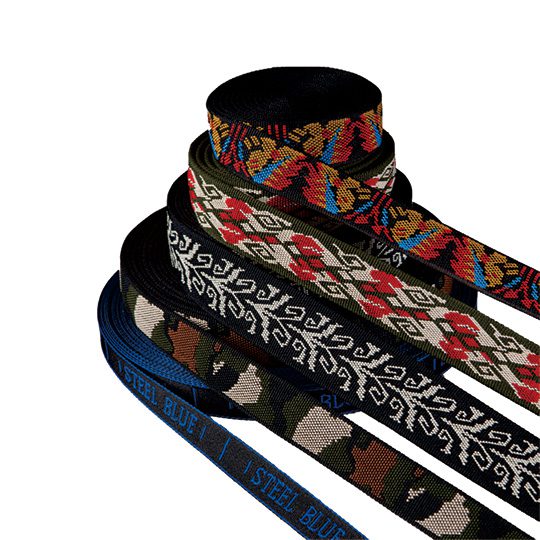Woven Jacquard Webbing: Uses, Benefits, and Maintenance
Contents

In the world of textiles, there are various materials and techniques used to create diverse and high-quality products. One popular technique is the use of woven jacquard webbing. In this article, we will explore the uses, benefits, and care of woven jacquard webbing.
Definition of Woven Jacquard Webbing
Woven jacquard webbing is a type of fabric created using a jacquard loom. This loom enables the fabric maker to create intricate and detailed patterns using weaving techniques. Woven jacquard webbing is typically made from synthetic or natural fibers such as nylon, polyester, or cotton. The patterns produced can range from elaborate floral motifs to logos or text.
Uses of Woven Jacquard Webbing
Woven jacquard webbing finds application in various industries and uses. Some common uses of woven jacquard webbing include:
a. Clothing Industry
Woven jacquard webbing is used in the clothing industry to create accents on garments, such as details on collars, sleeves, or waistbands. The intricate patterns and details produced by woven jacquard webbing can provide an artistic and luxurious touch to clothing.
b. Fashion Accessories
Woven jacquard webbing is also used in the production of fashion accessories like bag straps, hair ties, or belts. By utilizing woven jacquard webbing, fashion accessories can have unique and eye-catching patterns.
c. Furniture Industry
In the furniture industry, woven jacquard webbing is used as part of chair or sofa upholstery. The presence of woven jacquard webbing can enhance the aesthetic appearance of furniture, providing an elegant and stylish look.
d. Sports Products
Woven jacquard webbing is also utilized in the sports product industry. For example, in backpack straps, shoelaces, or sports equipment straps. The use of woven jacquard webbing adds durability and additional strength to sports products.
Benefits of Woven Jacquard Webbing
The use of woven jacquard webbing brings several benefits, including:
a. Attractive Aesthetics
Woven jacquard webbing with intricate patterns and details can provide an appealing and luxurious appearance to textile products or fashion accessories.
b. Strength and Durability
Woven jacquard webbing is made from strong and durable fibers, providing additional strength to the products it is used in.
c. Pattern Diversity
The use of jacquard looms allows for the creation of diverse and unique patterns, offering limitless possibilities in designing products.
d. Easy Customization
Woven jacquard webbing can be easily customized to fit design needs and preferences, making it flexible for various applications.
Care Instructions for Woven Jacquard Webbing
To maintain the quality and durability of woven jacquard webbing, here are some care tips to follow:
a. Hand Washing
It is recommended to hand wash woven jacquard webbing using cold or lukewarm water and a mild detergent. Avoid using washing machines to prevent damage to the patterns and details.
b. Gentle Drying
If needed to dry woven jacquard webbing, do so carefully in a shaded area. Avoid direct sunlight to prevent color fading.
c. Avoid Rough Usage
Avoid using woven jacquard webbing in rough or excessive friction situations. This can reduce the risk of fabric damage.
d. Proper Storage
Store woven jacquard webbing properly after use. Fold neatly or roll and place it in a dry area protected from dust or excessive light.
Conclusion
Woven jacquard webbing is a fabric with intricate patterns and details created through weaving techniques using a jacquard loom. Its usage provides aesthetic beauty, added strength, and diverse customizable patterns to suit design needs. Proper care is essential to ensure longevity and maintain the quality of woven jacquard webbing.
FAQ
Woven Jacquard
No, woven jacquard webbing can be made from synthetic fibers like nylon or polyester, but it can also use natural fibers like cotton.
The jacquard loom is used for various types of fabric, but in this context, it is specifically used to create intricate patterns on woven jacquard webbing.
It is advisable not to machine-wash woven jacquard webbing to avoid damaging the patterns and details. Hand washing is recommended for proper care.

